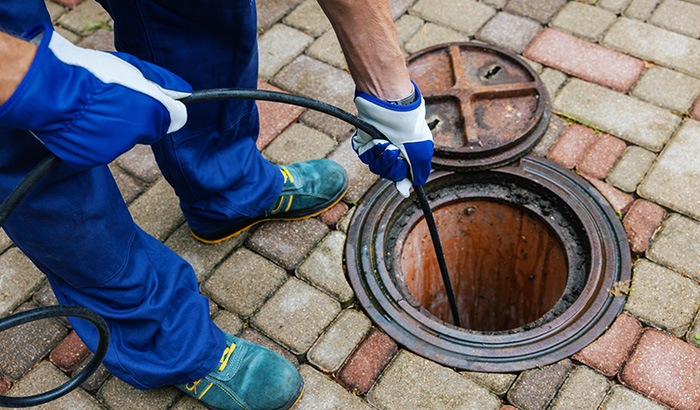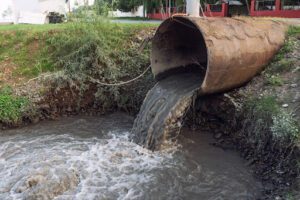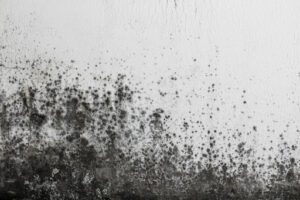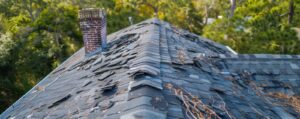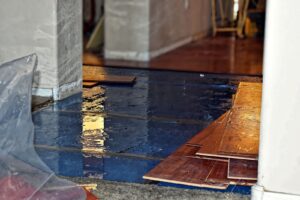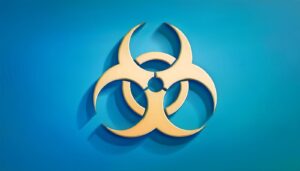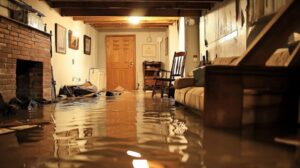When it comes to sewage damage, the implications go far beyond the visible mess. Sewage damage poses serious health risks that demand our attention and understanding.
In this blog, we shed light on the specific health risks involved with sewage damage. From harmful pathogens to hazardous chemicals, we provide valuable insights into the potential consequences of sewage damage.
Keep reading to learn how to avoid sewage damage and keep yourself and your family safe.
What Is Sewage Damage?
To start, it is crucial to delve into the precise nature of sewage damage. This form of damage materializes when any kind of property becomes tainted and compromised due to the presence of human waste. This contamination can arise from various sources, including malfunctioning sewage systems, overflow events, or plumbing mishaps, resulting in complex challenges that demand swift and comprehensive mitigation measures.
Blocked sewer lines, toilet backups, flooding, or other plumbing-related issues can cause sewer damage. And the damage can range from minor incidents like a toilet overflowing to severe cases that require professional sewer damage restoration services.
Having said that, it doesn’t matter how bad sewer damage is. Even the most minor case can put your health at risk. Even if it’s just a toilet backup, it’s essential to handle it immediately to prevent further issues and potential health hazards.
5 Health Risks From Sewage Damage You Should Know About
Exposure to sewage damage can result in bacterial infection, mold growth that can make you sick, parasites, hazardous chemicals, and poor air quality. Let’s look at how each of these problems can make you sick.
1. Bacterial Infections:
Sewage damage can indeed result in a bacterial infection. Sewage contains a variety of harmful bacteria, such as E. coli, Salmonella, and Pseudomonas aeruginosa, which can cause infections when they come into contact with the human body.
E. coli is a bacteria that normally lives in the intestines of healthy humans and animals. While most strains are harmless, a few specific strains can cause illness. One notable strain is E. coli O157:H7, which can lead to severe symptoms like stomach cramps, bloody diarrhea, and vomiting.
Salmonella, or salmonellosis, is a bacterial disease primarily affecting the intestinal tract. Salmonella lives in the intestines of animals and humans. It’s possible to come into contact with salmonella through bowel movements or contaminated food or water. Symptoms of salmonella include diarrhea, fever, and stomach cramps.
Pseudomonas aeruginosa is a common bacterium that can cause disease in humans, plants, and animals. In humans, Pseudomonas aeruginosa infections can occur in various parts of the body, including the blood, lungs (pneumonia), and other areas following surgery.
It is known to be a multidrug-resistant and extensively drug-resistant bacterium. This means it can be challenging to treat as it may not respond to commonly used antibiotics. Infections caused by Pseudomonas aeruginosa can be serious and potentially fatal, particularly in individuals with weakened immune systems.
When sewage contaminates an area, bacteria can easily spread through contact with contaminated surfaces, water, or aerosolized droplets. It can lead to bacterial infection if you come into direct contact with these bacteria, either through contact with contaminated water or inhaling airborne particles.
Bacterial infections from sewage exposure can affect multiple organs and body systems. For example, Pseudomonas aeruginosa can cause skin, respiratory tract, urinary tract, and gastrointestinal tract infections. These infections can be difficult to treat.
2. Mold Growth:
Sewer damage can create a conducive environment for mold growth. When sewage spills occur, the excess moisture and organic matter provide ideal conditions for mold spores to thrive and multiply. Mold spores are present in the air around us, and when they land on damp surfaces, they can begin to grow and form colonies.
Here’s how the presence of mold in areas with sewer damage can impact health:
- Allergic reactions: Mold produces tiny spores that can become airborne. When these spores are inhaled, they can trigger allergic reactions in sensitive individuals. Symptoms may include sneezing, coughing, wheezing, itchy or watery eyes, and nasal congestion.
- Respiratory issues: Mold spores can also irritate the respiratory system, leading to respiratory symptoms such as chest tightness, shortness of breath, and exacerbation of asthma or allergies. Individuals with pre-existing respiratory conditions may be more susceptible to these effects.
- Toxic mold exposure: Certain species of mold, such as Stachybotrys chartarum (commonly known as black mold), can produce mycotoxins. Mycotoxins are toxic compounds produced by certain fungi that contaminate food crops like grain, nuts, spices, fruit, and animal feed.
Exposure to high levels of mycotoxins can cause toxic mold syndrome, leading to more severe health effects such as headaches, fatigue, dizziness, and even neurological symptoms.
To prevent mold growth and its associated health risks, addressing sewer damage promptly and conducting proper cleanup is important. This includes removing contaminated materials, drying and dehumidifying affected areas, and thoroughly cleaning with appropriate antimicrobial solutions.
Professional assistance may be necessary to safely and effectively mitigate mold growth, especially in cases of extensive sewer damage. Mold remediation experts can identify and remove mold, address moisture issues, and help restore the affected areas to a safe and mold-free condition.
3. Parasites:
Parasites live on or inside another organism, known as the host, and derive their nutrients from the host’s body. They can be found in various environments, including humans, animals, and plants.
Parasites establish symbiotic relationships with their hosts, but unlike mutualism, where both species benefit, parasites harm their hosts while benefiting themselves.
Parasitic infections can lead to various symptoms and health problems. Depending on the specific parasite involved, these can range from mild discomfort, such as itching or gastrointestinal disturbances, to severe diseases and complications.
Some parasites are known to carry and transmit diseases, posing additional risks to human and animal health.
Sewer damage can potentially increase the risk of getting sick with parasites. When sewer systems are damaged, water and soil contamination are possible. There might be parasites in what’s contaminated.
Here’s how sewer damage can contribute to the spread of parasites and potential health risks:
- Contaminated water sources: Sewage leakage can contaminate nearby water sources, such as rivers, lakes, or groundwater. Parasites in the sewage can enter these water sources, leading to waterborne parasitic infections. Consuming or coming into contact with contaminated water can increase the risk of infections caused by parasites such as Giardia and Cryptosporidium.
- Soil contamination: In cases where sewage seeps into the soil, it can lead to ground contamination. Parasites in sewage can survive in the soil for a certain period, and direct contact with or ingesting contaminated soil can result in parasitic infections. This can occur when someone accidentally consumes soil-contaminated food or when contaminated soil comes into contact with open wounds or enters the mouth.
Common parasitic infections associated with sewage-contaminated environments include giardiasis, cryptosporidiosis, and soil-transmitted helminth infections.
To prevent the transmission of parasites from sewer damage, it is important to address the issue promptly and take appropriate precautions:
- Avoid direct contact with sewage or sewage-contaminated water and soil.
- Use protective gear, such as gloves, boots, and masks, when cleaning up sewage spills or handling contaminated materials.
- Thoroughly wash hands with soap and clean water after any potential exposure to sewage or contaminated areas.
- Ensure proper disinfection and sanitation measures are followed during the cleanup process.
4. Hazardous Chemicals:
Sewage damage often includes hazardous chemicals. Organic hazardous materials can include pathogens, bacteria, viruses, and parasites. Inorganic hazardous materials can include heavy metals like lead, mercury, cadmium, and arsenic.
Hazardous nutrients like nitrogen and phosphates can also be present in sewage. While these nutrients are essential for plant growth, excessive amounts can lead to eutrophication in water bodies.
Eutrophication leads to oxygen depletion, harmful algal blooms, and damage to aquatic ecosystems.
Hazardous chemical contaminants include industrial chemicals, pesticides, cleaning agents, and pharmaceuticals.
Hazardous chemicals from sewer damage can pose significant health risks to individuals exposed to them. Sewer systems may contain various chemicals, including toxic gases, industrial byproducts, and harmful substances in wastewater.
- Respiratory problems: Inhalation of toxic gases, such as hydrogen sulfide or methane, released from sewer systems can lead to respiratory issues. These gases can cause irritation, coughing, difficulty breathing, or even more severe respiratory conditions.
- Gastrointestinal issues: Exposure to hazardous chemicals from sewer damage can also affect the gastrointestinal system. Ingesting or coming into contact with contaminated water or food can result in symptoms like nausea, vomiting, diarrhea, or stomach cramps.
- Skin and eye irritation: Chemicals in sewer systems can irritate the skin and eyes upon contact. This can manifest as redness, itching, burning sensation, or even more severe skin conditions.
- Long-term health effects: Prolonged exposure to hazardous chemicals can have long-term health effects. Studies suggest that certain occupational chemical exposures may result in chronic health conditions, but the impacts may only become evident after years of exposure.
It is crucial to note that the specific chemicals and health risks can vary depending on the situation, the severity of sewer damage, and the substances in the sewage.
5. Air Quality:
Sewer damage can adversely affect air quality and potentially make you sick. When sewer systems are damaged, various factors contribute to the decline in air quality, leading to potential health risks. Here’s an explanation of how sewer damage can affect air quality and your health:
- Release of toxic gases: Sewer systems may emit toxic gases, such as hydrogen sulfide (H2S), methane (CH4), or ammonia (NH3), especially when there is a blockage or compromised ventilation. Inhalation of these gases can cause respiratory problems, including irritation of the airways, coughing, shortness of breath, or even more severe respiratory conditions.
- Odorous and irritating compounds: Sewer damage can produce foul-smelling odors due to the presence of decomposing organic matter and bacterial byproducts. Odorous compounds can include volatile organic compounds (VOCs), such as mercaptans and amines, which can irritate the respiratory system and cause other health issues.
- Particulate matter and allergens: Sewer damage can release particulate matter into the air. These particles can include fine dust, mold spores, bacteria, and other allergenic substances. Inhalation of these particles can trigger respiratory allergies, exacerbate existing respiratory conditions like asthma, or lead to respiratory infections.
- Microbiological contaminants: Sewage contains various microorganisms like bacteria, viruses, and fungi. When sewer systems are damaged, these microorganisms can become aerosolized and enter the air. Inhalation of airborne microorganisms can result in respiratory tract infections, allergic reactions, or other health issues.
To minimize the risks associated with sewer damage and air quality, it is important to take appropriate precautions:
- If you detect foul odors or suspect sewer damage, avoid prolonged exposure to the affected area and seek professional help for inspection and repair.
- Provide adequate ventilation to help dissipate any toxic gases or odors.
- Use proper personal protective equipment, such as masks, when cleaning up or working in areas with sewer damage.
- If you experience respiratory symptoms or illnesses after exposure to sewer damage, consult a healthcare professional for evaluation and treatment.
As you can see, there are quite a few ways you can get sick from sewage damage. None are pleasant to experience; they can cause severe health issues. If you have been exposed to sewage damage and notice any of these symptoms or are concerned about your health, seek medical attention immediately.
The sooner you seek medical care, the faster you can get better. Don’t let sewage damage interrupt your health or your life.
Call Total Flood & Fire Restoration Today
If you’re facing sewage damage in your home or business, don’t delay! Call Total Flood & Fire Restoration today for professional and prompt sewer damage restoration services.
Our team of trained and experienced professionals can quickly assess the damage, remove contaminated materials, and safely disinfect the affected areas. The health risks associated with sewage damage are serious and shouldn’t be taken lightly.
Protect yourself, your family, and your property from the dangerous effects of sewer damage. Call us at 385.483.2109 for fast and reliable restoration services. Trust Total Flood & Fire Restoration for complete sewer damage restoration.

